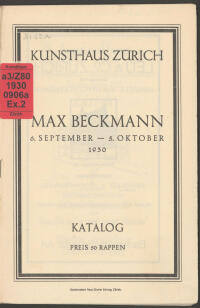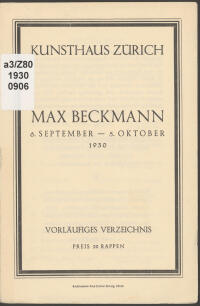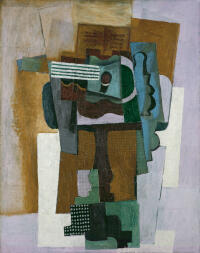Max Beckmann
06.09.1930 – 05.10.1930
Location Kunsthaus.
Location Kunsthaus.
German Psychic
In 1930, at the time of the exhibition in the Kunsthaus Zürich, Max Beckmann (b. 1884 Leipzig, d. 1955 New York) was living in Frankfurt. Previously he had spent some months in Paris. But three years later, after his dismissal from the Städelschule in Frankfurt, he moved to Berlin. When he was ostracized by the Nazis in 1937, in the propaganda exhibition Entartete Kunst in the Haus der Kunst Munich together with other modernist artists, he finally fled to Amsterdam. After the war he emigrated to America.
The exhibition in the Kunsthaus encompassed more than 200 works, including 85 oil paintings from the past twenty-five years as well as other works in various media, such as drawing, etching, lithography and woodcuts. Provided was a comprehensive overview of the virtuoso creativity of this artist, who was perceived as particularly “German.” Especially his six self-portraits permitted penetrating insights into the emotional world after the end of World War I, which Beckmann had survived with trauma due to his work as a paramedic. In Self Portrait with Champagne Glass (1919, Städel Museum, Frankfurt a.M.) Beckmann posed in a hotel bar as a sickly looking, contorted dandy in a dinner jacket; a haunting, stage-like, claustrophobic setting.
The exhibition was well received. The art historian and collector Curt Glaser, Director of the Art Library in Berlin but fired by the Nazis, remarked that in neutral Switzerland German art received less attention than French art; consequently, he welcomed the exhibition. Beckmann was someone who “investigates the souls of people and listens in to the background of life” (Berliner Börsen-Courier). Critic noted in Beckman psychological defibration” and “fearful visions” and called him an artist who was recording the fear-ridden desolation of postwar Germany. Beckmann had recorded “the inner face of his time with the strength and penetration of a great visionary” (Zürcher Theater-Konzert-Freundesblatt). In the NZZ the exhibition was positively reviewed, and, in particular, a key work like Die Nacht (The Night, 1918–1919) was rightfully recognized as a “jammed-full image of the times.”
With the exhibition came a catalog with a list of works.
[Peter Stohler]
Further information
The exhibition was well received. The art historian and collector Curt Glaser, Director of the Art Library in Berlin but fired by the Nazis, remarked that in neutral Switzerland German art received less attention than French art; consequently, he welcomed the exhibition.

1/2
exhibition catalog

2/2
exhibition catalog
1/2
